Yes, there is...
I also had this issue years ago, so I am telling from memory 😱
6N23P is the direct replacement for 6DJ8 or E88CC or 6922, give or take.
6N1P is similar (haven't checked pinout), but is meant to be used at higher B+.
PS. When you need any 6N23P...ask me. Have a few left 🙂
I also had this issue years ago, so I am telling from memory 😱
6N23P is the direct replacement for 6DJ8 or E88CC or 6922, give or take.
6N1P is similar (haven't checked pinout), but is meant to be used at higher B+.
PS. When you need any 6N23P...ask me. Have a few left 🙂
Last edited:
6N1P is rather similar to 6BQ7A.
Beware of sellers trying to fool you with false equivalents to ECC88/6DJ8.
These tubes are not alike.
Beware of sellers trying to fool you with false equivalents to ECC88/6DJ8.
These tubes are not alike.
The 6N1P has conventional, wound grids; the 6N23P (based on the Philips ECC88) has frame grids. I personally like the sound of the 6N1P better than the frame grid tubes. If the heater supply can handle it, I like to replace the 6DJ8/ECC88 tubes with the 6N1P.
With regards to audio circuit, the most relevant difference is plate resistance. 6N1P has about double rp compared to 6N23P.
JohnAtwood:
If you simply replace 6N23P with 6N1P, you will have a very much different (worse) load line. Much more distortion. 6N1P needs a higher plate load for similar performance.
JohnAtwood:
If you simply replace 6N23P with 6N1P, you will have a very much different (worse) load line. Much more distortion. 6N1P needs a higher plate load for similar performance.
Yes, it is true that the transconductance of the 6N1P is less than the 6N23P, hence higher rp, but in most audio circuits, this doesn't make much difference, because the load resistor is usually quite high (relative to rp) to get higher gain. In a circuit that has a very low load resistor, such as in an oscilloscope, you are right, and the 6N1P should not be used. I've done this substitution in a variety of audio circuits and have checked the results with a distortion analyzer, and have noticed little, if any degradation.
Yes, it is true that the transconductance of the 6N1P is less than the 6N23P, hence higher rp, but in most audio circuits, this doesn't make much difference, because the load resistor is usually quite high (relative to rp) to get higher gain. In a circuit that has a very low load resistor, such as in an oscilloscope, you are right, and the 6N1P should not be used. I've done this substitution in a variety of audio circuits and have checked the results with a distortion analyzer, and have noticed little, if any degradation.
In most audio circuits it makes a lot of difference. The higher rp means higher distortion for given plate resistor, the higher gm means the bias point is completely different which means the operating point is nowhere near optimum. This leads to even more distortion but also, because the plate voltage is shifted by a large amount the clipping point is much reduced, the cathode voltage will be lower which means grid current occurs at lower signal levels.
Cheers
Ian
I have used both types and they can be used in almost all similar purposes, but the design/component values differ a lot.
The main disadvantage of 6N1P (compared to 6N23P) I have noticed is that the saturating voltage ( Ua when Ug1 = 0 V) is quite high.
The main disadvantage of 6N1P (compared to 6N23P) I have noticed is that the saturating voltage ( Ua when Ug1 = 0 V) is quite high.
6N1P is not the same as 6N23P/ECC88/6DJ8.
The Russian tube 6N1P is often, advertised as equivalent to ECC88/6DJ8/6922. In my opinion, this is not the case. There are rather large differences between these tubes. I will try to show you in this reply.
6N1P is pin compatible with ECC88, u is also about the same, but the rest of the specifications are not. Rp is higher and gm is only about 1/2 of ECC88.
6N1P also needs a heating current about twice the heater of ECC88. The max plate voltage of 6N1P is 300 v, and for ECC88 it is about 130, so that is something to consider if someone are to replace 6N1P with ECC88/6DJ8
I have done some work with the load lines and characteristics of the tubes to show you the difference, and to suggest what western tube that is the nearest equivalent of 6N1P.
The load line is drawn at the following points:
Ub 300 v, Ia max – 20 mA, Ug – 3v (Ub is the power supply voltage, Ia is the plate current and Ug is the grid voltage)
First, let us look at 6N1P see Fig. 1:
Fig.1. Here the chosen voltages gives the following result: Ia (plate current) 8.4 mA and a plate voltage (Ua) at 174.5 volt. The input signal voltage is 860 mV. This gives Ri of 6.6 Kohm, gm is about 5.5 mA/v and u about 36.
Now let us compare with ECC88/6DJ8, see Fig2 :
Fig. 2. This is not a good bias point for ECC88, but I am going to use it to compare the data with the other tubes.
As we see u is, as expected, about the same, the plate current is 10 mA, that is a bit higher, gm also has another value, 7.3 mA/v , Ua is at 148 v and Ri is at 4.6 Kohm, together a rather significant difference compared to 6N1P. And the working point is nowhere near optimum for ECC88 .
Now let us have a look at 6N23P see Fig 3:
Fig.3. This tube is not exactly the same as ECC88, but much closer than 6N1P.
Ia is 11 mA, Ua becomes 138 V, gm is a bit higher at 9.6 and u a bit lower 31 og Ri is also a bit lower, 3,2 Kohm.
6N23P is a much closer equivalent to ECC88, but how about 6N1P? Let us have a look at another western tube, the 6BK7/6BQ7 see Fig 4:
Fig. 4. The results are as follows:
Ia - 9 mA, Ua - 165 v, gm – 5, u 32.5 and at the end Ri 6.6 kohm. This is a lot closer to 6N1P than ECC88, the curves looks very similar too. The distortion is a bit higher. The curves looks very similar to 6N1P too.
This is IMO the closest western equivalent to 6N1P.
Look at the manufacturers’ datasheets.
And they give about the same results.
To summarize in a table, Fig 6:
My opinion is:
The closest western equivalent to 6N1P is 6BQ7/6BK7.
The closest Russian equivalent to ECC88 is 6N23P.
6N1P IS NOT EQUIVALENT TO 6N23P or ECC88/6DJ8.
This is based on the curves; I will be back with my own measurements later.
The Russian tube 6N1P is often, advertised as equivalent to ECC88/6DJ8/6922. In my opinion, this is not the case. There are rather large differences between these tubes. I will try to show you in this reply.
6N1P is pin compatible with ECC88, u is also about the same, but the rest of the specifications are not. Rp is higher and gm is only about 1/2 of ECC88.
6N1P also needs a heating current about twice the heater of ECC88. The max plate voltage of 6N1P is 300 v, and for ECC88 it is about 130, so that is something to consider if someone are to replace 6N1P with ECC88/6DJ8
I have done some work with the load lines and characteristics of the tubes to show you the difference, and to suggest what western tube that is the nearest equivalent of 6N1P.
The load line is drawn at the following points:
Ub 300 v, Ia max – 20 mA, Ug – 3v (Ub is the power supply voltage, Ia is the plate current and Ug is the grid voltage)
First, let us look at 6N1P see Fig. 1:
Fig.1. Here the chosen voltages gives the following result: Ia (plate current) 8.4 mA and a plate voltage (Ua) at 174.5 volt. The input signal voltage is 860 mV. This gives Ri of 6.6 Kohm, gm is about 5.5 mA/v and u about 36.
Now let us compare with ECC88/6DJ8, see Fig2 :
Fig. 2. This is not a good bias point for ECC88, but I am going to use it to compare the data with the other tubes.
As we see u is, as expected, about the same, the plate current is 10 mA, that is a bit higher, gm also has another value, 7.3 mA/v , Ua is at 148 v and Ri is at 4.6 Kohm, together a rather significant difference compared to 6N1P. And the working point is nowhere near optimum for ECC88 .
Now let us have a look at 6N23P see Fig 3:
Fig.3. This tube is not exactly the same as ECC88, but much closer than 6N1P.
Ia is 11 mA, Ua becomes 138 V, gm is a bit higher at 9.6 and u a bit lower 31 og Ri is also a bit lower, 3,2 Kohm.
6N23P is a much closer equivalent to ECC88, but how about 6N1P? Let us have a look at another western tube, the 6BK7/6BQ7 see Fig 4:
Fig. 4. The results are as follows:
Ia - 9 mA, Ua - 165 v, gm – 5, u 32.5 and at the end Ri 6.6 kohm. This is a lot closer to 6N1P than ECC88, the curves looks very similar too. The distortion is a bit higher. The curves looks very similar to 6N1P too.
This is IMO the closest western equivalent to 6N1P.
Look at the manufacturers’ datasheets.
And they give about the same results.
To summarize in a table, Fig 6:
My opinion is:
The closest western equivalent to 6N1P is 6BQ7/6BK7.
The closest Russian equivalent to ECC88 is 6N23P.
6N1P IS NOT EQUIVALENT TO 6N23P or ECC88/6DJ8.
This is based on the curves; I will be back with my own measurements later.
Attachments
-
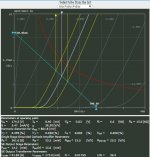 Fig 1 6N1PCurve.JPG55.8 KB · Views: 1,879
Fig 1 6N1PCurve.JPG55.8 KB · Views: 1,879 -
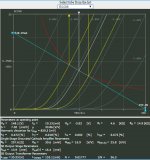 Fig 2 ECC88Curve.JPG57.5 KB · Views: 1,845
Fig 2 ECC88Curve.JPG57.5 KB · Views: 1,845 -
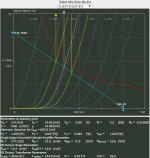 Fig 3 6N23PCurve.JPG56.6 KB · Views: 1,883
Fig 3 6N23PCurve.JPG56.6 KB · Views: 1,883 -
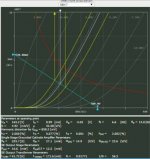 Fig 4 6bk7Curvewb.jpg28.1 KB · Views: 1,771
Fig 4 6bk7Curvewb.jpg28.1 KB · Views: 1,771 -
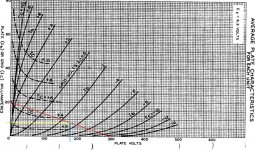 6BQ7CurveWorkpntwb.jpg155.3 KB · Views: 1,760
6BQ7CurveWorkpntwb.jpg155.3 KB · Views: 1,760 -
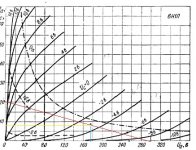 _6n1pcurvesWorkPnt.jpg74.7 KB · Views: 498
_6n1pcurvesWorkPnt.jpg74.7 KB · Views: 498 -
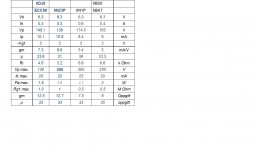 Fig 6 Table.jpg116.3 KB · Views: 555
Fig 6 Table.jpg116.3 KB · Views: 555
Last edited:
I hope I can ask here.
Since I am looking forward to build a tube preamp based on ecc88 / 6n1p. The link to preamp is here.
???????X10D-GC V1.0D
In the description the author has mentioned that 6N1P-6922 tube can be used, but needs higher current. I did not understand that part properly. Is is just as simple as increasing the amperes for 0-12v 1a to 2a.
Kindly guide
Vikram
Since I am looking forward to build a tube preamp based on ecc88 / 6n1p. The link to preamp is here.
???????X10D-GC V1.0D
In the description the author has mentioned that 6N1P-6922 tube can be used, but needs higher current. I did not understand that part properly. Is is just as simple as increasing the amperes for 0-12v 1a to 2a.
Kindly guide
Vikram
That is a chineese "buffer" schematic , the second ECC88 uses grid leak bias instead of cathode resistor . Very dubious design , I would not trust that it will work right or at the maximum potential . Only if you are familiar with tubes and know how to modify/recalculate a circuit .
Last edited:
As stated above, ECC88/6DJ8 is similar to 6N23P, NOT 6N1P.
Got it Thanks.
That is a chineese "buffer" schematic , the second ECC88 uses grid leak bias instead of cathode resistor . Very dubious design , I would not trust that it will work right or at the maximum potential . Only if you are familiar with tubes and know how to modify/recalculate a circuit .
Well that's beyond my knowledge.
Will have to look for some other proven and tested tube preamp design which can work with low voltages and easily available parts.
Can you suggest any.
Vikram
The mu (u) of the 6DJ8, 6922, and 6N1P are all in the range of 30 to 35.
The 6DJ8 and 6922 have low rp; 6N1P has higher rp.
The 6DJ8 and 6922 have high transconductance, Gm; the 6N1P has medium transconductance, Gm.
u = GM x rp
The pinout of the filament, grids, plates, and cathodes are the same for 6DJ8, 6922, and 6N1P.
You can see why marketing wants you to purchase the 6N1P as a substitute for 6DJ8 and 6922. They just want to sell what they have, based on 2 similarities, not 4 similarities.
By the way, there are some 6N1P data sheets on the web, that have incorrect rp and transconductance.
The 6DJ8 and 6922 have low rp; 6N1P has higher rp.
The 6DJ8 and 6922 have high transconductance, Gm; the 6N1P has medium transconductance, Gm.
u = GM x rp
The pinout of the filament, grids, plates, and cathodes are the same for 6DJ8, 6922, and 6N1P.
You can see why marketing wants you to purchase the 6N1P as a substitute for 6DJ8 and 6922. They just want to sell what they have, based on 2 similarities, not 4 similarities.
By the way, there are some 6N1P data sheets on the web, that have incorrect rp and transconductance.
From my point of view, 6n1p is somewhere between ECC81 and ECC88. Maybe as already has been mentioned, the same as ECC40.
But remember, there is 6n5p also... which is close to 6n1p.
But remember, there is 6n5p also... which is close to 6n1p.
6N1P
u ~ 30 to 35
rp ~ 7000 Ohms
Gm ~ 4000 micro-mhos
I have used the 6N1P tubes, I like them.
It works great if you do not use a particular incorrect data sheet that reverses the rp and Gm specs.
(rp ~ 4000 Ohms, Gm ~ 7000 micro-mhos, those values are totally incorrect).
Use the 6N1P at its real specifications, and you will probably like it.
If the correct specs are not what you are looking for, then pick a completely different tube type.
u ~ 30 to 35
rp ~ 7000 Ohms
Gm ~ 4000 micro-mhos
I have used the 6N1P tubes, I like them.
It works great if you do not use a particular incorrect data sheet that reverses the rp and Gm specs.
(rp ~ 4000 Ohms, Gm ~ 7000 micro-mhos, those values are totally incorrect).
Use the 6N1P at its real specifications, and you will probably like it.
If the correct specs are not what you are looking for, then pick a completely different tube type.
- Home
- Amplifiers
- Tubes / Valves
- Difference between 6N1P and 6N23P?